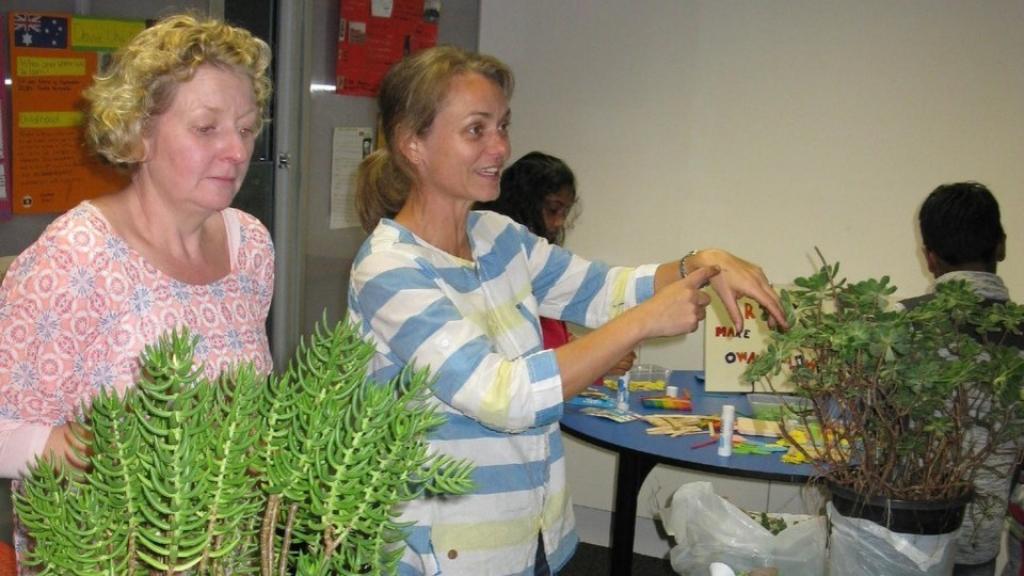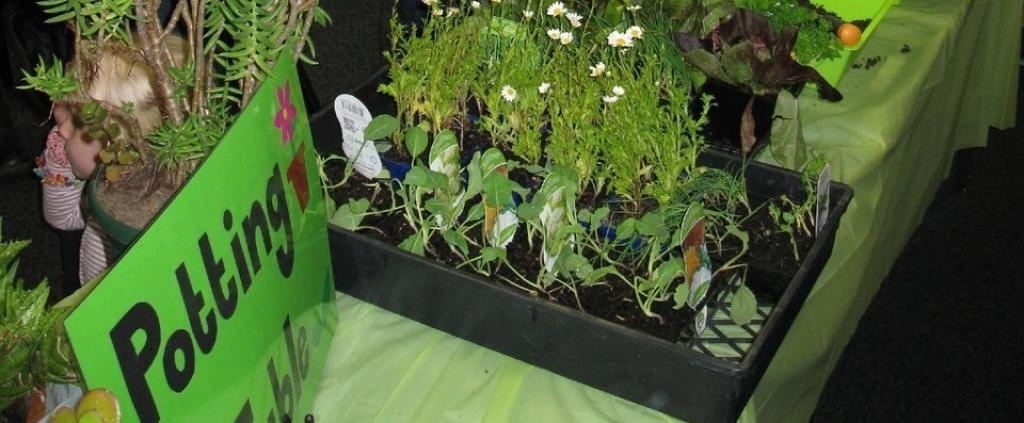A green evening
A whole school case study: Glen Huntly Primary School
Duration and scope of project: One-hour evening event for school, students and community – 400 participants.
School description: Glen Huntly Primary School (GHPS) is a small Victorian State school located in south-east Melbourne with a junior and senior campus that is separated by a main road and connected by a bridge. GHPS’s local government area is the City of Glen Eira. The school takes pride in its multicultural community. There is currently a student population of 290, many of whom live in apartments without access to gardens.
Vision and process
The school’s Sustainability Coordinator Kamila Krauze, during a leadership course, felt inspired to organise a ‘green’ event to help raise environmental awareness in the school community. There was initially no budget for such an event, but increased community involvement created the momentum for a mini fête. The total money borrowed from the school was $625 and it was returned with profit.
The school’s first ever Green Evening Event aimed to:
- Raise environmental awareness in the school community
- Celebrate and showcase student sustainability projects
- Highlight the school’s many environmental initiatives and promote ‘green’ behaviours
- Increase parent participation in school environmental events
- Raise much-needed money for endangered animal charities and our sustainability program.
The Green Evening Event was a success because it was supported by key school and community stakeholders: the principal, assistant principal, environmental teachers, parent association, the student and parent community, volunteers, other sustainability educators (water, waste, biodiversity), the local council and the Bastow Institute.
Because the event was the first of its kind, the principal approved an allocation of only one hour. It was scheduled in the evening, preceding the school’s annual Art Show. The event featured student-, parent- and teacher-driven environmental stalls. All students from Prep to Grade 6 displayed their sustainability units of work – these included posters, dioramas, PowerPoint presentations, banners with ‘green’ messages and a movie created about the Boon Wurrung Aboriginal People.
A range of stalls set up by teachers and parents included plant-potting tables, face painting, raffle tickets, environmental hampers, distribution of tri-nature organic cleaning products, a solar cell display from a parent/CSIRO researcher and organic food tasting from the cooking and gardening program. Two parent artists donated hand-drawn pictures of endangered animals – these were auctioned on the evening and the proceeds given to charity groups.
Outcomes
- Increased community awareness of the Boon Wurrung people and our school initiatives with 400 members of the community participating
- A strong sense of community and environmental purpose
- Ten new families signing up for online updates
- Six new families at the next working bee
- An appreciation for the artistic talents of parents in the community
- $2,827 raised in one hour, minus deductions, $2,202 clear profit
- From this profit, $733 raised to help threatened animals via their charity organisations
- $1,469 raised to support our sustainability program
- $660 for joining the Stephanie Alexander Kitchen Garden Program to promote nutrition
- $809 for a Port Phillip Eco-Centre consultant to assist our ResourceSmart Schools accreditation
- An unexpected friendship with Dr Scholes from the CSIRO, which resulted in a Scientists in School partnership
- An annual spot in the yearly school event calendar.
Reflections
The greatest obstacles for this project were:
- Finding the time to organise it, out of hours
- Finding support from the already busy parent association and staff
- Assuring management that any money borrowed to fund the event would be returned with profit.
These challenges were overcome by approaching each stakeholder group to discuss the benefits for the students’ environmental understanding. Acknowledging people’s contributions at the conclusion of the project was extremely important.
The format and layout of this event is flexible and easily adapted to any school. It showcases how schools that may be financially strapped can be internally resourceful in raising money for environmental initiatives by looking to their students, parents and local community for support.
The success of the first Green Evening Event led to a second event the following year continuing to raise the profile of sustainability in the school and funding further sustainability activities in the school. It was wonderful to positively engage our community and students in environmental projects.
“Tell me and I will forget. Show me and I may remember. Involve me and I will understand.”
Resources
Our school community provided the talent, resources, knowledge and passions for this project.
Cross-curriculum priorities
This event incorporated many curriculum areas, fostering community engagement and enabling fundraising opportunities. Within the Sustainability cross curriculum priority it links to the:
- Systems organising ideas – “All life forms, including human life, are connected through ecosystems on which they depend for their wellbeing and survival”
- Futures organising ideas – “Actions for a more sustainable future reflect values of care, respect and responsibility, and require us to explore and understand environments”.
This event supported our Resource Smart Schools accreditation by addressing many areas in the Core, Water, Waste, Energy and Biodiversity modules.

